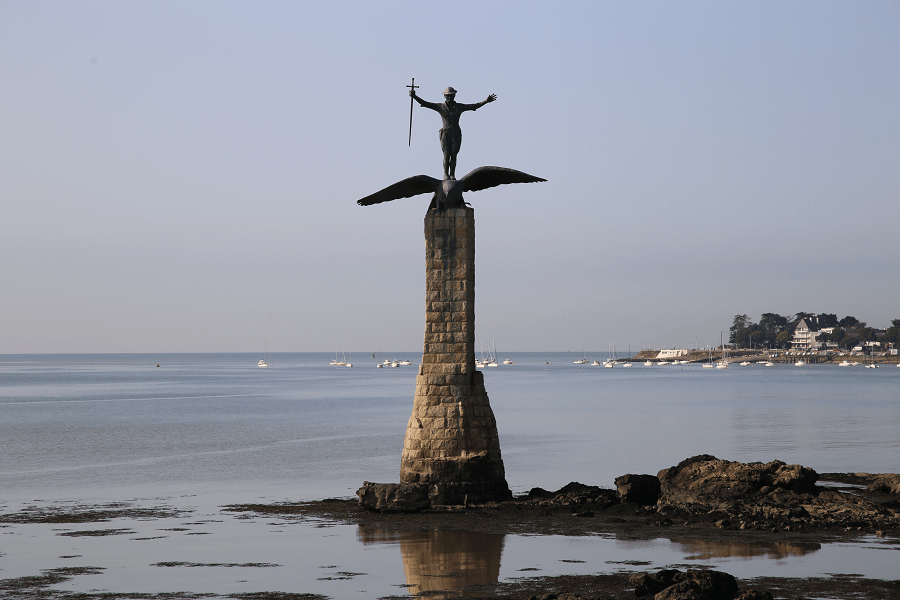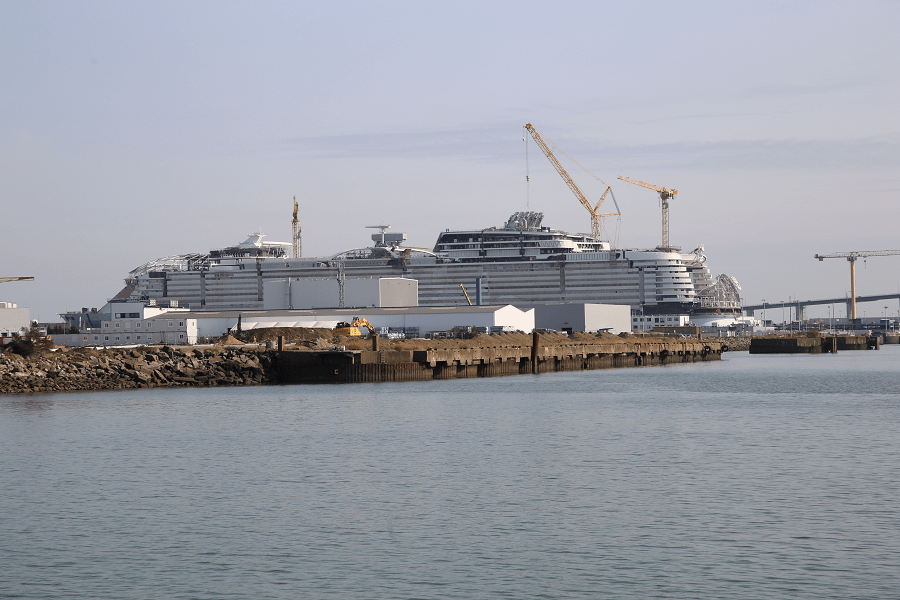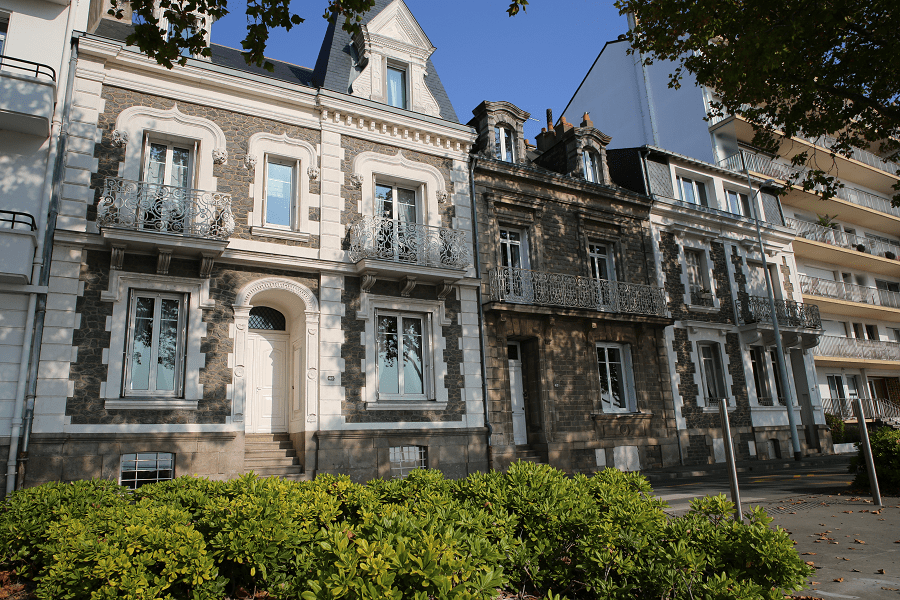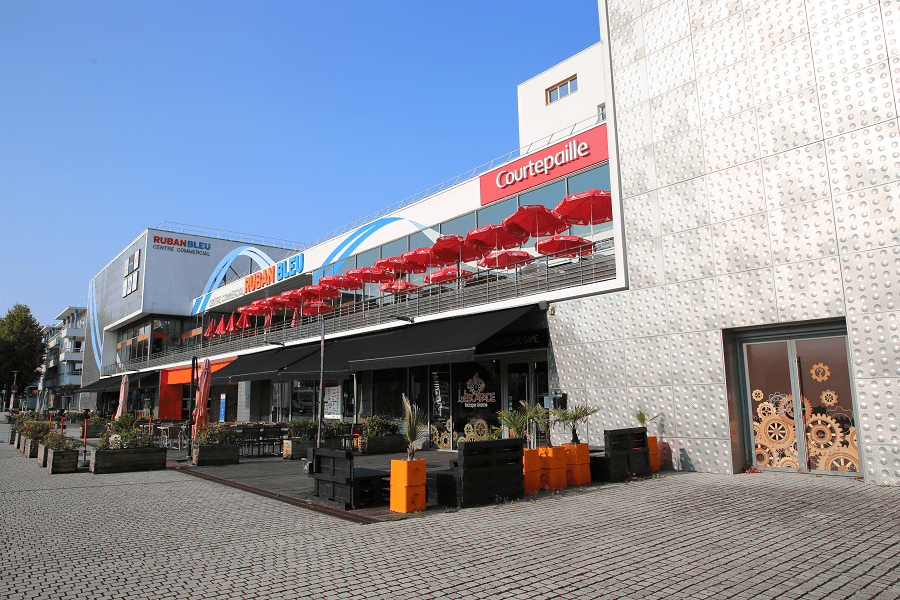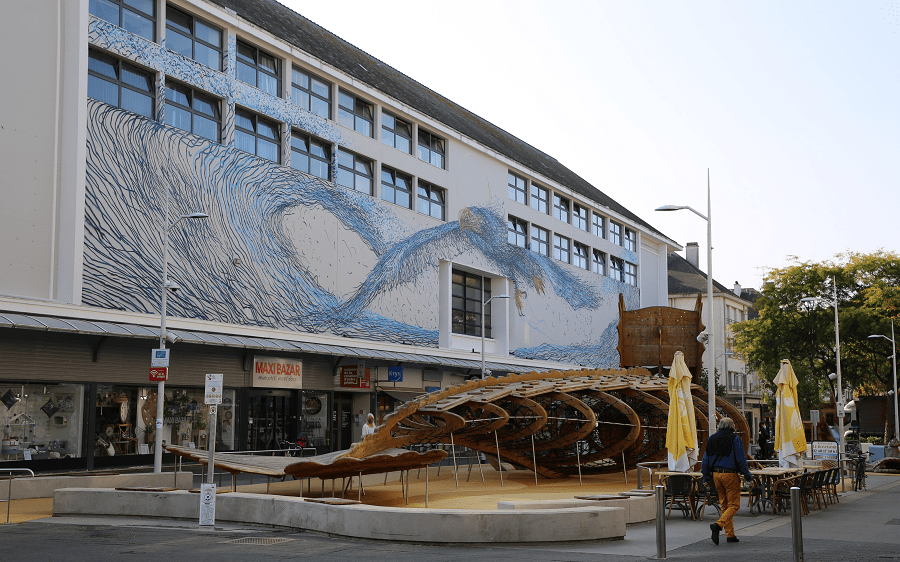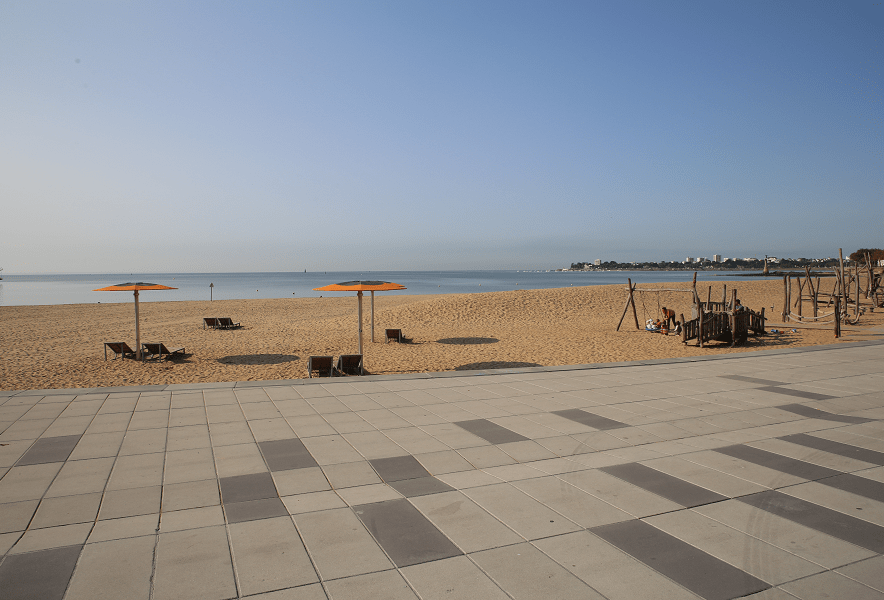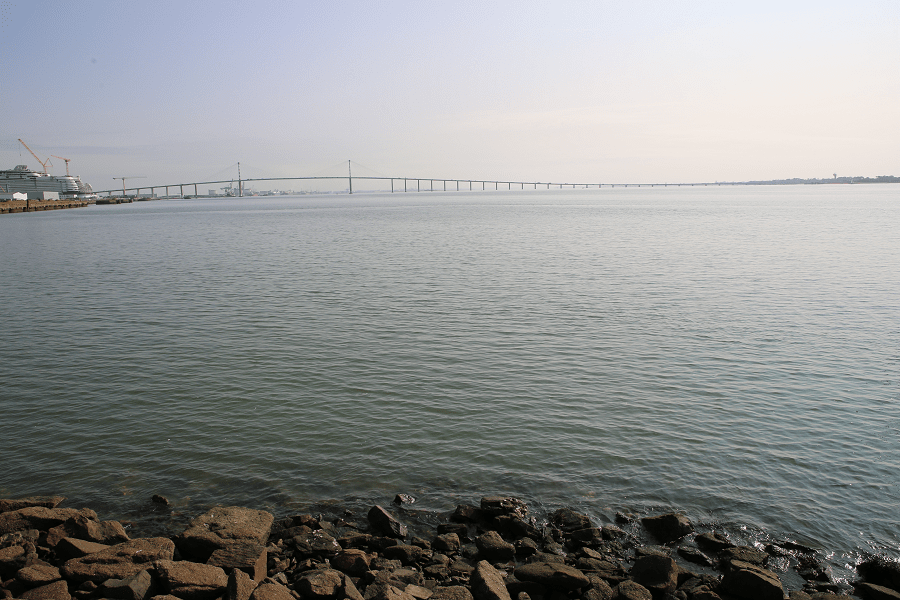Saint-Nazaire (Fr. Saint-Nazaire) is a commune in the Loire-Atlantique department in western France, in traditional Brittany.
Historically the city is part of Brittany. Before the creation of the departments, Saint-Nazaire came under the Duchy of Brittany, then the Parliament of Brittany from 1532 (Union of Brittany with France). On the religious level, Saint-Nazaire has come under the bishopric of Nantes since the Middle Ages.
The city is the capital of shipbuilding in France, the Chantiers de l’Atlantique of Saint-Nazaire is one of the largest sites in the world, building large ships over 300 meters. The largest ocean liner in the current world, the Symphony of the Seas, was also built in Saint-Nazaire.
Geographically, Saint-Nazaire is located in the Armorican massif, north of the Loire estuary and south of the Brittany seafront.
Saint-Nazaire, along with Nantes, constitutes an important economic hub in the West, in particular thanks to the port infrastructures of the Autonomous Port of Nantes-Saint-Nazaire, but also by the significant weight of the industrial sector with aeronautical and naval constructions.
The town was one of the most damaged in France during World War II.
Tourism and attractions
Being seriously damaged during WW2 Saint-Nazaire was rebuilt in the late 1940s in a minimalist functional style.
The most popular place of the city is Boulevard de Mer, running along the beaches of Saint-Nazaire, Villès-Martin and Kerlédé for 3 km.
The monuments and sites along the estuary and Boulevard de Mer:
- Commemorative monument to the Commando;
- Monument to the abolition of slavery;
- Elevating factory;
- Place du Commando;
- Lancastria memorial;
- Stele of the American soldier overlooking the German eagle;
- Villès-Martin fisheries;
- The theater, a contemporary construction based on the remaining parts of the old railway station.
U-boat pens
Following the surrender of France to German forces later in June 1940, the port immediately became a base of operations for the Kriegsmarine and was as such the target of Allied operations. A heavily fortified U-boat Saint-Nazaire submarine base was built by Organisation Todt shortly after occupation, with a 9-metre-thick concrete ceiling capable of withstanding almost any bomb in use at the time.
The base still stands today as its extremely sturdy construction makes demolition uneconomical. The base is now used by cafes, a bar and on the roof is an exhibition about Saint-Nazaire.
Museums
Escal Atlantic, open since 2000 in the Ville-port district, renovated in 2012/2013. This is a museum whose architecture is inspired by a transatlantic liner. This equipment is an interpretation centre on the history of liners built in Saint-Nazaire, between the end of the nineteenth century and the 1960s, through the decorative arts, life on board, navigation and propulsion, the line operation etc. Nearly 200 authentic objects from famous ships, including the liners France and Normandy, are staged, accompanied by interactive multimedia devices. The opening of this place was followed, in the same decade, by the opening of LiFE hosting exhibitions, concerts, performances, and artistic and cultural events.
The Espadon is a French navy submarine, decommissioned in the 1980s. Today, it is installed in the forward submarine base, a fortified lock located above the eastern entrance to the Basin of Saint-Nazaire and can be visited.
The Ecomuseum of Saint-Nazaire, located in the Petit Maroc district, facing the Estuary, traces the history of Saint-Nazaire from prehistoric times to the present day, by addressing the main themes that have shaped the city over the centuries (First and Second World Wars, aircraft construction, port activity and mainly shipbuilding). It also presents archaeological sites: Dissignac tumulus, dolmen and menhir as well as archaeological remains.
Excursions
The city’s heritage also consists of industrial sites that can be visited:
- Chantiers de l’Atlantique is the official name of the shipyard established in Saint-Nazaire, France, from 1862 under the name of Chantiers de Penhoët;
- The Airbus plant is one of the biggest centres of excellence for the aeronautical industry in Europe. A two-hour guided tour through the workshops where the planes are assembled and equipped is available;
- Large seaport of Nantes-Saint-Nazaire.
Beaches
The town has a fairly extensive coastline. West of the Pointe de Ville-ès-Martin, it is a coast of rocky cliffs that you can, in general, follow on the path GR 34, with several beaches, such as those of Villès-Martin, Porcé, and especially those which surround the seaside resort of Saint-Marc-sur-Mer.
Shopping
From tiny shops in the centre of the city to big brands in two open-air malls: Paquebot in the very city centre (with its stunning “Dragon playground”) and Ruban Bleu in Ville-Port.
Restaurants
There are two Michelin list restaurants in the city:
Le Skipper, 1 avenue René-Coty, Saint-Nazaire, 35 – 57 EUR • Modern Cuisine
Le Sabayon, 7 rue de la Paix, Saint-Nazaire, 22 – 60 EUR • Traditional Cuisine
Transport and how to get to?
Saint-Nazaire railway station is served by both the TGV and regional trains and buses of the TER Pays de la Loire. TGV (high speed train) connection to Paris, Lyon, Marseille, Lille, and Strasbourg, with trains to Paris via the LGV Atlantique taking just over 2 hours. TER Pays de la Loire provides links to Nantes, Angers, Le Mans, La Roche sur Yon, and other regional cities and towns.
Saint-Nazaire airport is located 5 km south-east of Saint-Nazaire, in the commune of Montoir-de-Bretagne. It has an annual capacity of approximately 150,000 passengers, and is the operational and maintenance base for Eagle Aviation France. International travel is available via Nantes Atlantique Airport, the biggest airport in western France.
Distance by car:
From La Baule-Escoublac: 17 min (18.6 km) via D213
From Pornichet: 15 min (12.9 km) via D392 and D213
From Guérande: 20 min (20.0 km) via D213
From Cognac: 1 h 32 min (97.1 km) via D213
From Biarritz (tolls): 5 h 54 min (611 km) via A63 and A10
From Bayonne (tolls): 5 h 44 min (597 km) via A63, A10 and A83
From Dax (tolls): 5 h 27 min (559 km) via A10 and A83
From Nantes: 56 min (65.1 km) via N165 and N171
From Saumur (tolls): 2 h 8 min (209 km) via A11
From Bordeaux (tolls): 4 h (412 km) via A10 and A83
From La Rochelle (tolls): 2 h 24 min (202 km) via A83
From Toulouse (tolls): 6 h 16 min (650 km) via A62 and A10
From Carcassonne (tolls): 7 h 10 min (741 km) via A62
From Monaco (tolls): 11 h 52 min (1,227 km) via A7
From Nice (tolls): 11 h 36 min (1,205 km) via A7
From Cannes (tolls): 11 h 21 min (1,178 km) via A7
From Saint-Tropez (tolls): 11 h 21 min (1,151 km) via A7
From Marseille (tolls): 9 h 58 min (1,048 km) via A7
From Avignon (tolls): 9 h 17 min (964 km) via A71
From Montpellier (tolls): 8 h 32 min (890 km) via A62
From Béziers (tolls): 7 h 55 min (828 km) via A62
From Perpignan (tolls): 8 h 7 min (854 km) via A62
From Narbonne (tolls): 7 h 39 min (798 km) via A62
From Andorra (tolls): 8 h 43 min (831 km) via A62
Main information
Area: 47 sq. km
Population: 70 000
Languages: French
Currency: euro
Visa: Schengen
Time: Central European UTC +1
GPS coordinates: 47°16′50″N 2°12′31″W
See here best sea and ocean resorts of France and Spain (223 objects)



